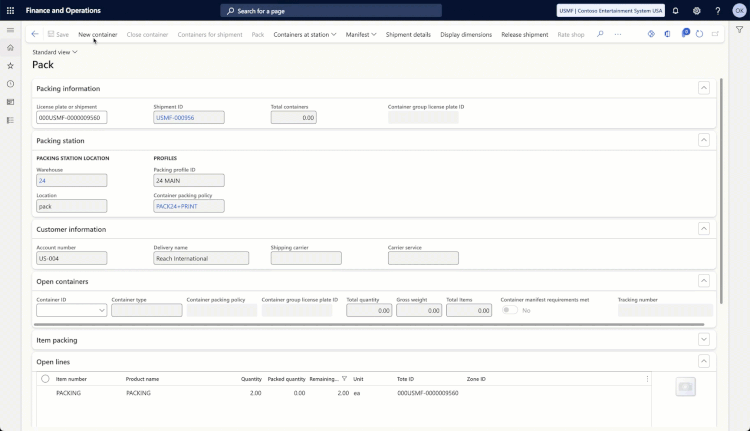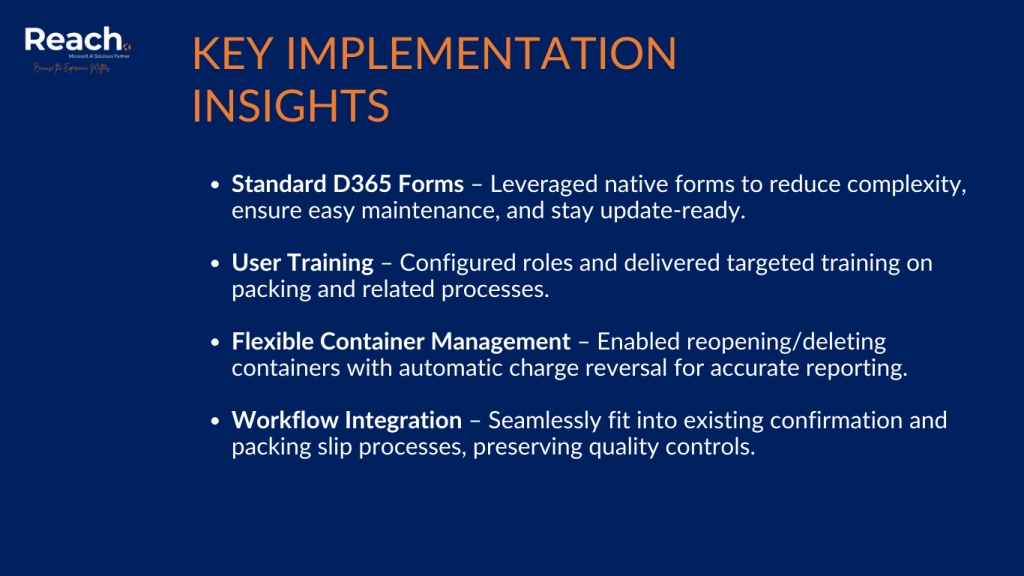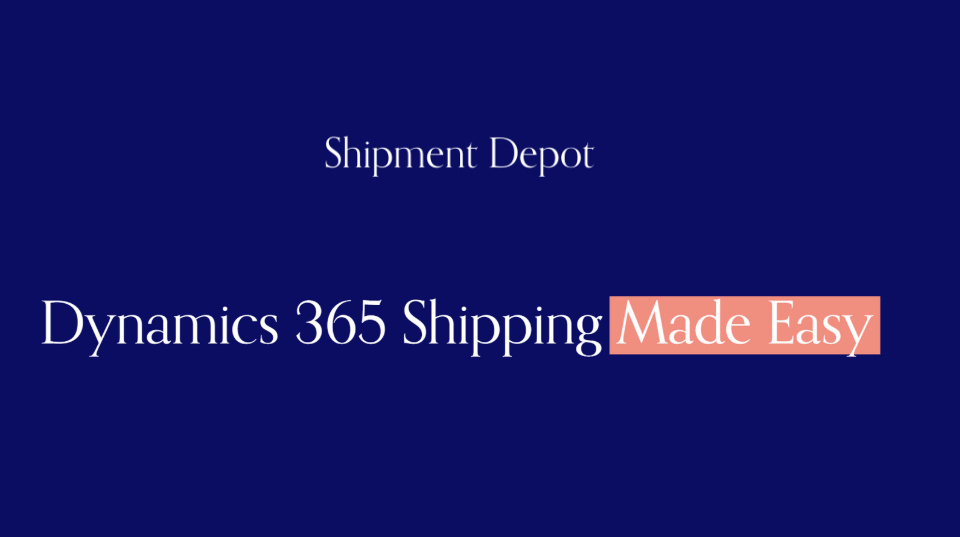The logistics industry demands precision, speed, and reliability. When our client needed to optimize their Dynamics 365 Supply Chain Management shipping processes, they turned to Shipment Depot for a solution that would integrate seamlessly with their existing workflows while providing the flexibility and control they needed, providing them with an opportunity to serve their customers better.
The Challenge: Complex Shipping Workflows
Like many companies in the logistics sector, they faced several shipping-related challenges:
- Manual Processes: Their existing shipping workflow required extensive manual intervention, from rate shopping to label generation
- Limited Carrier Options: They were locked into specific carriers, limiting their ability to optimize costs and delivery times
- Disconnected Systems: Shipping operations existed in silos, making it difficult to track costs and performance holistically
- Scalability Issues: As order volumes increased, their manual processes became bottlenecks that hindered growth

The Solution: Streamlined Integration
Shipment Depot’s implementation focused on creating a seamless, automated workflow that leveraged D365’s standard forms and processes. Here’s how the solution transformed their operations:
Step 1: Order Creation and Mode Selection
The process begins when a company creates a sales order and specifies the preferred shipping method (UPS or FedEx). The system is configured to work with both carriers, with UPS providing additional flexibility for testing and demo purposes through dummy tracking number generation.
Step 2: Automated Warehouse Work Generation
Following D365’s standard load planning process, the system automatically generates warehouse work with optimized pick-and-put pairs. Workers move products to designated pack locations, and the system prints license plate labels with carrier branding – creating a professional, branded experience from the start.
Step 3: Mobile-Optimized Packing Process
Our client’s warehouse staff use mobile devices with the specialized “Open SPS work” menu to complete warehouse work efficiently. This mobile-first approach ensures workers can process orders quickly without being tied to desktop workstations.
Step 4: Intelligent Packing and Container Management
At the packing station, workers scan license plates and create containers with specified dimensions. The system’s flexibility allows for both complete license plate packing and partial quantity packing, accommodating various order sizes and shipping requirements.
Step 5: Real-Time Rate Shopping
One of the most impactful features has been the real-time rate shopping capability. Workers can compare carrier rates instantly, ensuring cost-effective shipping decisions without delaying order processing.
Step 6: Automated Label Generation and Tracking
Once the optimal carrier service is selected, the system generates shipping labels automatically. Workers can adjust package weights if needed, ensuring accurate shipping costs. The system captures tracking numbers and charge information, making this data immediately available throughout the organization.
Results and Benefits
The implementation has delivered significant improvements across operations:
Operational Efficiency
- Reduced manual data entry
- Decreased average order processing time
- Eliminated carrier website switching and manual rate comparisons
Cost Optimization
- Real-time rate shopping has reduced shipping costs
- Better carrier selection based on service requirements and cost considerations
- Eliminated errors that previously resulted in shipping cost chargebacks
Enhanced Visibility
- Complete tracking information available in real-time
- Shipping charges automatically integrated into sales orders
- Comprehensive reporting capabilities for performance analysis
Improved Scalability
- System handles volume spikes without additional manual intervention
- Standardized processes that new employees can learn quickly
- Future-ready architecture that grows with business needs

Key Implementation Insights
Several factors contributed to the successful implementation
Leveraging Standard D365 Forms
By using D365’s native forms and processes, avoiding the complexity and maintenance overhead of custom integrations. This approach also ensures compatibility with future D365 updates.
Comprehensive User Training
Key users were specifically configured with appropriate access permissions and received focused training on the packing form and related processes.
Flexible Container Management
The ability to reopen and delete containers when needed provides operational flexibility while automatically reversing shipping charges, maintaining accurate financial reporting.
Integration with Existing Workflows
The solution seamlessly integrated with existing confirmation and packing slip processes, maintaining their established quality controls and documentation procedures.

Looking Forward
Success with Shipment Depot demonstrates the power of choosing solutions that work with, rather than against, existing D365 processes. The partnership with Reach ensures ongoing support and access to best practices from other successful implementations.
As our client continues to grow, their Shipment Depot implementation provides a solid foundation for scaling operations while maintaining the efficiency and accuracy their customers depend on. The solution’s flexibility means they can easily add new carriers, adjust shipping rules, and adapt to changing business requirements without major system overhauls.
For logistics companies considering similar improvements to their D365 shipping operations, this experience illustrates the transformative potential of choosing the right integration partner and solution architecture.

